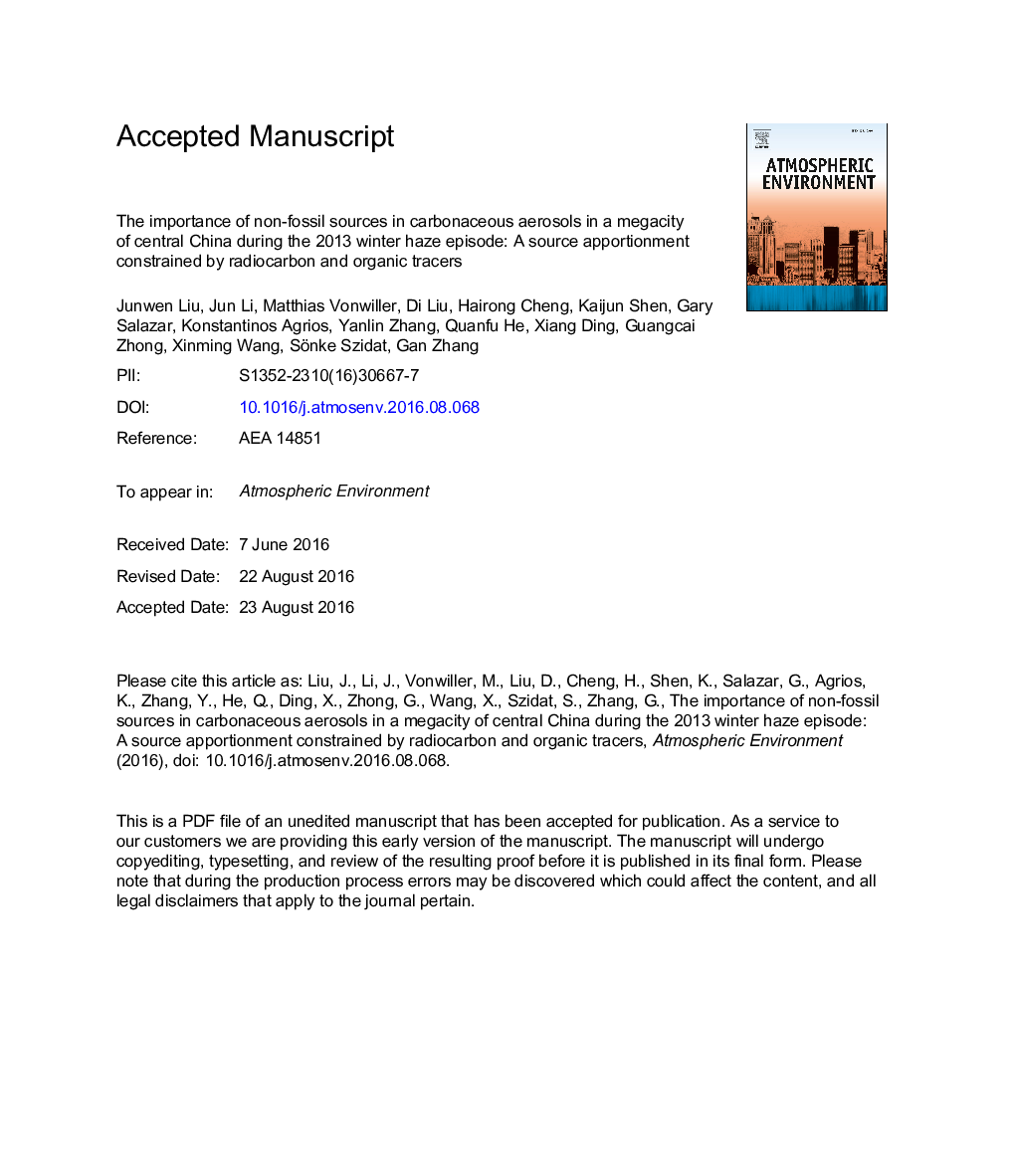| Article ID | Journal | Published Year | Pages | File Type |
|---|---|---|---|---|
| 6335630 | Atmospheric Environment | 2016 | 28 Pages |
Abstract
To determine the causes of a severe haze episode in January 2013 in China, a source apportionment of different carbonaceous aerosols (CAs) was conducted in a megacity in central China (Wuhan, Hubei Province) by using the measurements of radiocarbon and molecular organic tracers. Non-fossil sources (e.g., domestic biofuel combustion and biogenic emissions) were found to be responsible for 62% ± 5% and 26% ± 8% of organic carbon (OC) and elemental carbon (EC) components by mass, respectively. Non-fossil sources contributed 57% ± 4% to total CAs in this large-scale haze event, whereas fossil-fuel sources were less dominant (43% ± 4%). The CAs were composed of secondary organic carbon (SOC; 46% ± 10%), primary fossil-fuel carbon (29% ± 4%) and primary biomass-burning carbon (25% ± 10%). Although SOC was formed mainly from non-fossil sources (70% ± 4%), the role of fossil precursors was substantial (30% ± 4%), much higher than at the global scale. Combined measurement of organic tracers and radiocarbon showed that most non-fossil SOC was probably derived from biomass burning during this long-lasting haze episode in central China.
Related Topics
Physical Sciences and Engineering
Earth and Planetary Sciences
Atmospheric Science
Authors
Junwen Liu, Jun Li, Matthias Vonwiller, Di Liu, Hairong Cheng, Kaijun Shen, Gary Salazar, Konstantinos Agrios, Yanlin Zhang, Quanfu He, Xiang Ding, Guangcai Zhong, Xinming Wang, Sönke Szidat, Gan Zhang,
